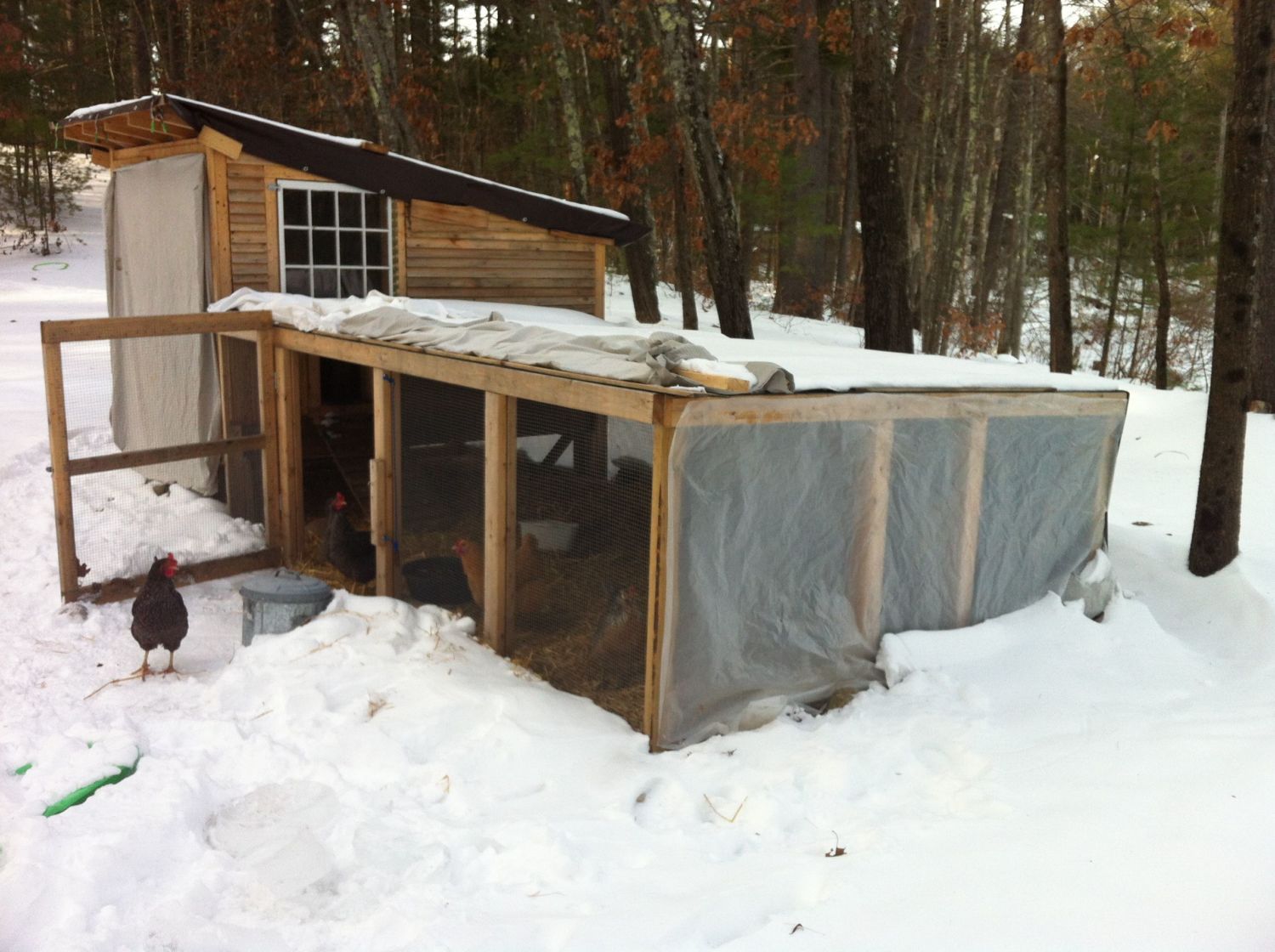I am new to chicken raising in northern Massachusetts and thought I would share by positive experiences so far with my coop design. We bought 2 female buff orpington and 2 female barred rock chicks in March of 2013 and 2 female Americana chicks in May. I spent a lot of last winter and spring researching, to the extreme, ideas for coops. Just when I was about ready to settle on a design, I came across a lot of discussion on BYC about ventilation and air quality. Eventually, I came across the fresh-air coop design of JackE (member) who turned me on to the philosophy and book by Prince T. Woods entitled Fresh-Air Poultry Houses. I liked the smaller, box-like designs and decided to try to create my own making sure to make the coop a bit longer than wider (~6x8) in my case. My girls are doing very well and have been laying eggs in the coldest of winter; we are getting 3-4 eggs a day (one hen I don't think every started laying). I was definitely nervous about moisture in the heavy rains. No problems. I was then worried about the snow getting in, but I haven't had snow get much beyond the front sill of the hardware cloth wire (the run was a bit more snow so I covered 3 of the sides with plastic). As for breezes and the wind, I hung from the inside roof and under one of the roosts a light piece of string with a small feather superglued to it. I used these to check for breezes. They move a bit with the wind, but only slightly and I think it is mainly from the pressure differences from the air moving outside the front. Temperatures have been absolutely no problem. The girls have been spending down to single digits lately on multiple days/nights without issue. I did crack a little with the impending recent blizzard and decided to drape bed sheets over the front openings just in case; I don't think I will next time. A couple of days ago, I was a little concerned because temperatures were supposed to drop to an unusual low of about -20 F and I read somewhere that this is a temperature that starts stressing chickens. If it were just up to me I would have left them, but my wife was also a little worried so we put them all in my colder basement overnight; I felt as though someone pulled the plug on my experiment.
Temperatures lately: Normal in the teens. At night, we have had a run of single digits, low of about -14.
I highly recommend the Woods book and seriously consider an open coop design.
The majority (~80%) of the front of the coop (left structure) is open all the time. No heat, no insulation, no light, no electricity.

These next photos are to show the general layout design, but have bed sheets draped over the open fronts in anticipation of a blizzard; I don't think they were necessary.

Plastic sheeting around 2 sides of larger run


Coop fully accessible via a large back door.

Chickens have access underneath coop (~18 inches tall). This shows that part covered in plastic.

Side access door and external nesting box.

nesting boxes.

Blizzard called for single digits so I did this just as a precaution; I don't think I need it next time.

Temperatures lately: Normal in the teens. At night, we have had a run of single digits, low of about -14.
I highly recommend the Woods book and seriously consider an open coop design.
The majority (~80%) of the front of the coop (left structure) is open all the time. No heat, no insulation, no light, no electricity.
These next photos are to show the general layout design, but have bed sheets draped over the open fronts in anticipation of a blizzard; I don't think they were necessary.
Plastic sheeting around 2 sides of larger run
Coop fully accessible via a large back door.
Chickens have access underneath coop (~18 inches tall). This shows that part covered in plastic.
Side access door and external nesting box.
nesting boxes.
Blizzard called for single digits so I did this just as a precaution; I don't think I need it next time.
Last edited:



